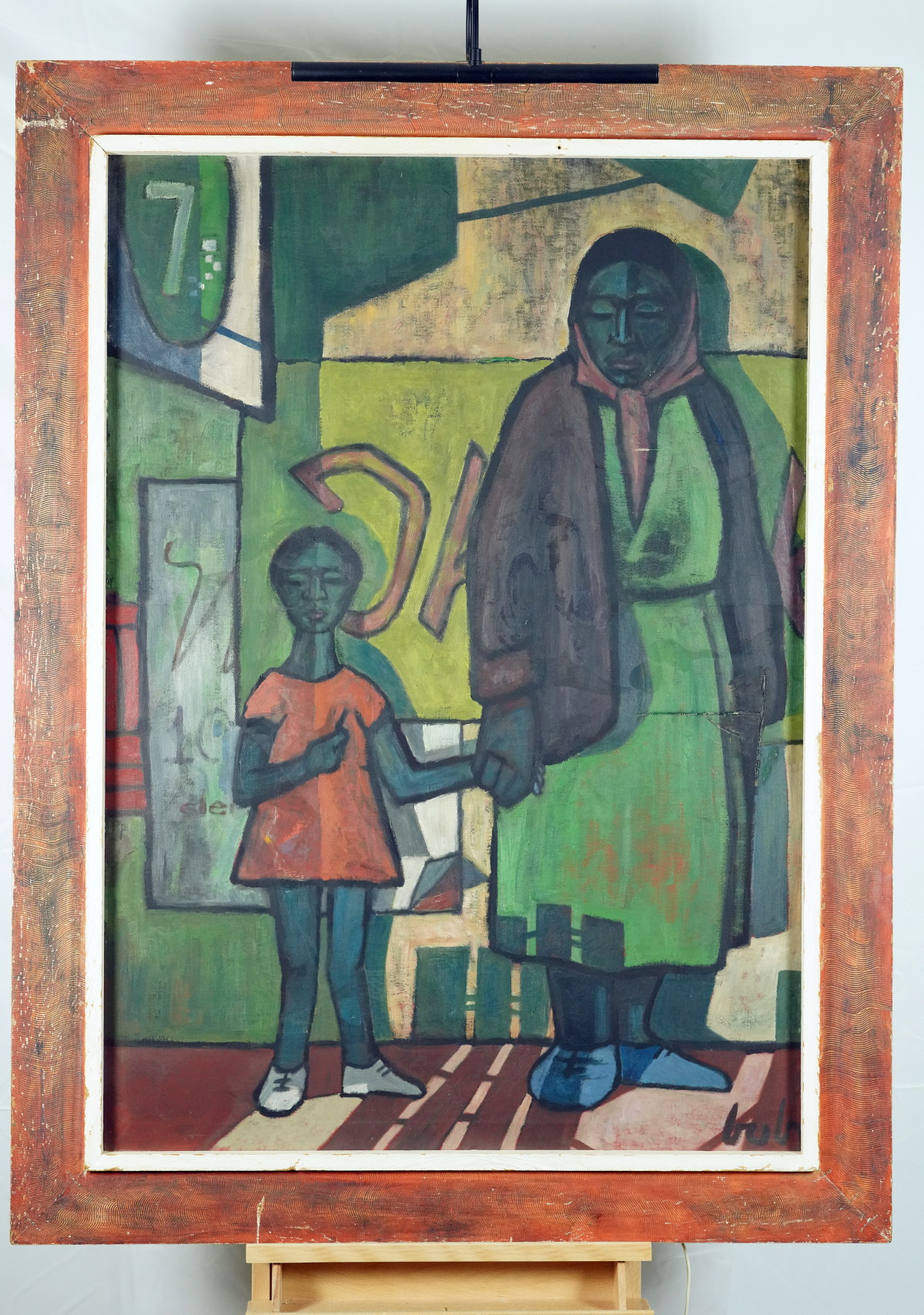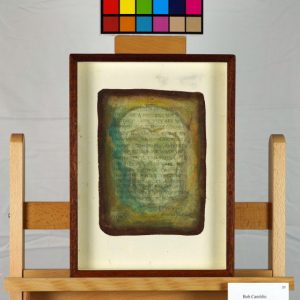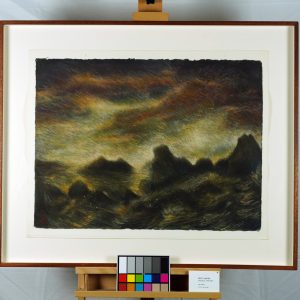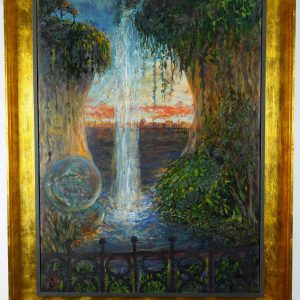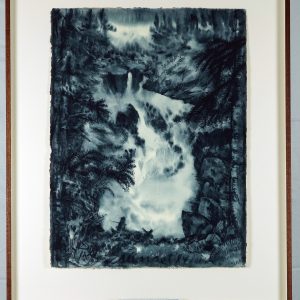Description
Woman and Child, c.1950s
Oil on canvas
Signed bob
47 x 33 in. (image)
56 x 42 in. (frame)
original, includes certificate of authenticity from ArtTrust
The painting “Woman and Child” depicts two figures, likely a child and an adult woman, standing together in a stylized, geometric setting. The child, dressed in an orange shirt, points towards the adult, who wears a green dress and shawl. The background features abstract shapes and symbols, with vivid colors of green, blue, and earthy tones. There is a sense of stillness and solemnity in their expressions, suggesting an emotional depth or narrative beneath the surface.
In Zen Buddhism, the journey towards enlightenment often involves embracing one’s true nature and connections with others. The figures in this painting could be seen as representing the interconnectedness of life and the cyclical nature of human experiences. The child’s gesture may symbolize inquiry or curiosity, while the adult figure represents guidance and wisdom. The contrasting colors could illustrate the tension between different life stages or the struggle to maintain balance in a world of dualities.
The I Ching, or “Book of Changes,” speaks to the dynamic interplay of forces and elements. This painting might correspond with Hexagram 37, “The Family” (家人). It signifies harmony within the household and the importance of mutual support. The presence of the child and adult evokes themes of familial roles, where each individual has a part to play in sustaining the family unit. The abstract background could symbolize the external influences and challenges that the family navigates together.
Combining these perspectives, the artwork reflects on the nature of familial bonds, the journey from youth to maturity, and the shared responsibilities of life. The geometric shapes and abstract forms could represent the constraints and structures imposed by society, while the figures embody the personal, intimate experiences that shape individual identity. The colors convey emotional resonance, with the warmth of the orange contrasted against the coolness of the greens and blues, suggesting an underlying struggle for harmony or understanding.
The style appears influenced by early to mid-20th century modernist movements, such as Cubism and Expressionism. The use of geometric forms and vibrant colors reflects the impact of artists like Pablo Picasso or Diego Rivera, who often explored social and familial themes. The painting’s use of flat planes and simplified forms aligns with the aesthetic language of modernism, where representation shifts towards conveying emotional or symbolic meaning rather than strict realism. The presence of numbers and abstract symbols may also hint at a socio-political message, possibly addressing issues of identity, culture, or historical context.
*Shipping cost will vary, please inquire at sales@camblingallery.com before purchasing.
Currently ships from Oregon, USA
Member of artnet? Apply for a discount! Inquire about intergallery and permanent loans for museums.
Reproductions of this drawing are available in multiple sizes!
Click here to use our high-resolution viewer!
This artwork is available with a non-fungible token to ensure traceability and transparency of provenance.
The royalty factor – Unlike traditional artworks, such as paintings, mosaics, statues, and the like, NFTs can be programmed to provide royalties to you every time the painting (and token) is sold and resold – for eternity. That mind-bending Camblin you sold could be worth millions one day and provide income for your great-great-great grandkids!
Anti-forgery – The central idea underpinning NFTs is that they are built on the blockchain, which is meant to offer advanced security. Think of it like an un-erasable and un-avoidable copyright.
Easy authentication – Another compelling aspect of NFT art and NFTs in general is the ability to quickly and easily authenticate items, as the record of ownership is scrupulously kept on the blockchain.
